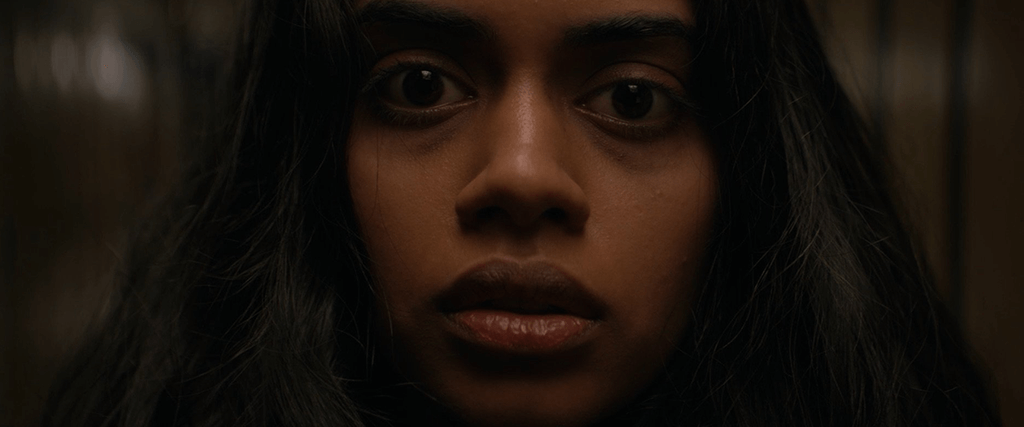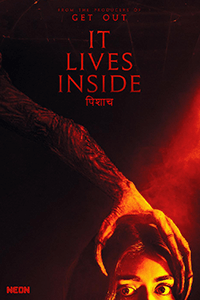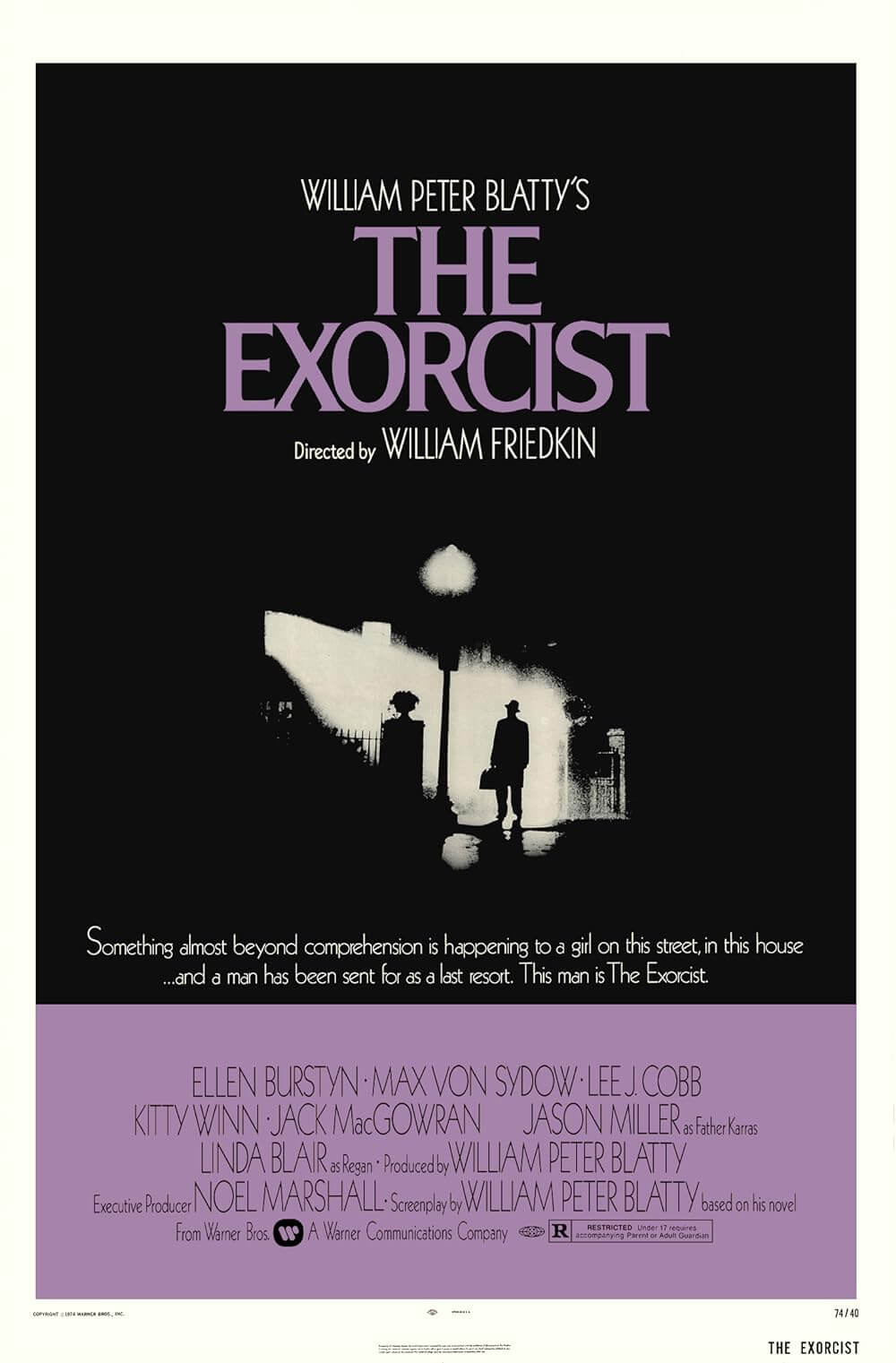
It Lives Inside
By Brian Eggert |
(Note: Neon will release It Lives Inside in theaters on Friday, September 22, 2023.)
Countless Hollywood horror movies feature ancient Christian demons and relics that spawn nightmarish supernatural scenarios. Titles ranging from The Exorcist (1973) to the whole Conjuring Universe employ religion and faith as a source of terror, while other franchises invent their boogeymen by attributing them to obscure—or altogether nonexistent—ancient cultures. Sam Raimi invented the Kandarian demon for The Evil Dead (1981), just as the Sinister (2012) filmmakers conceived of a fictional Babylonian figure, laughably named Bagul. We might also see a Jewish dybbuk represented (see 2012’s The Possession), but such stories prove rare next to their Christian counterparts. Even rarer still, if not entirely nonexistent, is an English-language film about a Hindu demon, but Indian-American director Bishal Dutta has done just that with It Lives Inside—a creepy monster movie with a culturally specific iconography that feels refreshing for sparing audiences another exorcism sequence laden with crucifixes and holy water.
Written by Dutta, the film opens with jarring shots that survey carnage in a suburban home—a promise of how bad things could get after a slow-burning first half. Then, the first-time writer-director settles into a story about Samidha (Megan Suri), a teen girl who goes by “Sam” and wants to blend in with her white classmates who only value her because it’s très chic to have an Indian friend. Having distanced herself from her former childhood best friend Tamira (Mohana Krishnan), Sam, much like her father (Vik Sahay), has stopped speaking Hindi and taking part in cultural ceremonies with her mother (Neeru Bajwa)—including the Durga Puja, an annual Hindu festival to celebrate the goddess Durga’s victory over Mahishasura. Instead, she has a close relationship with her teacher, Joyce (Betty Gabriel), and she spends her free time courting Russ (Gage Marsh). But when Tamira shows up to school behaving strangely, carrying a mason jar that she claims is filled with a malignant evil, Sam refuses to listen.
When Sam literally pushes her friend away, the mason jar falls, unleashing what we learn is a Pishach—a soul-eating creature known well in her Indian-American community. Feeding on negative emotions and flesh, the initially invisible force appears only in the shadows at first, recalling the curse in Raimi’s Drag Me to Hell (2009). Dutta delivers a few well-crafted scares in the monster’s initial, subtle appearances, with eyes glowing in the dark or a reflection in a cell phone. It begins by attacking Sam’s friends and loved ones, its presence unseen except for the teeth marks left on its victims—all part of its plan to “tenderize” Sam’s soul with fear. Meanwhile, Tamira has disappeared and remains trapped by the creature, bound to become Pishach food unless Sam can find a way to help her. This requires Sam to repair her relationship with her mother, who teaches her how to subdue the creature and save Tamira from becoming its meal.
Dutta’s family immigrated from India when he was four years old, and during interviews for his film’s SXSW premiere, he confessed to learning American culture from horror movies such as The Shining (1980), Poltergeist (1982), and A Nightmare on Elm Street (1984). Certainly, Dutta draws from a familiar playbook of supernatural scares. The similarities between this year’s The Boogeyman and It Lives Inside, for instance, prove unmistakable, and evidence of Dutta’s adherence to a horror film grammar that will seem familiar to genre aficionados. The director and his cinematographer, Matthew Lynn, craft some memorable setups, including a hellfire-red basement and an unforgettable attack on a swing. Though, Dutta makes a few confusing choices, such as editor Jack Price cross-cutting between Joyce attempting to escape the monster one night at school, and Sam’s mother preparing a ceremonial offering—a sequence that confusingly suggests it takes about 5 minutes to cook up an Indian cuisine smorgasbord.
However, Dutta’s message about the dangers of cultural conformity resonates, suggesting that Sam or any Indian-American person shouldn’t need to obliterate their culture to live in the United States. Fortunately, the filmmaker doesn’t use his film as an Intro to Indian Studies course, foregoing any need for clunky exposition or cultural explanation in favor of trusting his unfamiliar audience to pick up the details along the way. On a more fundamental genre level, It Lives Inside fulfills the base requirements of a horror movie by being genuinely unnerving and scary. Although the guy-in-a-suit quality of the Pishach in the third act is less effective in full view than when the figure is invisible and causing our imaginations to scramble, or when it’s seen only in fragments, Dutta’s use of mostly practical effects and shadows is commendable. Altogether, with an impressive performance from Suri and an assured first effort by Dutta, It Lives Inside is a welcome innovation on established material.

Unlock More from Deep Focus Review
To keep Deep Focus Review independent, I rely on the generous support of readers like you. By joining our Patreon community or making a one-time donation, you’ll help cover site maintenance and research materials so I can focus on creating more movie reviews and critical analysis. Patrons receive early access to reviews and essays, plus a closer connection to a community of fellow film lovers. If you value my work, please consider supporting DFR on Patreon or show your support in other ways.
Thank you for your readership!
Brian Eggert | Critic, Founder
Deep Focus Review







